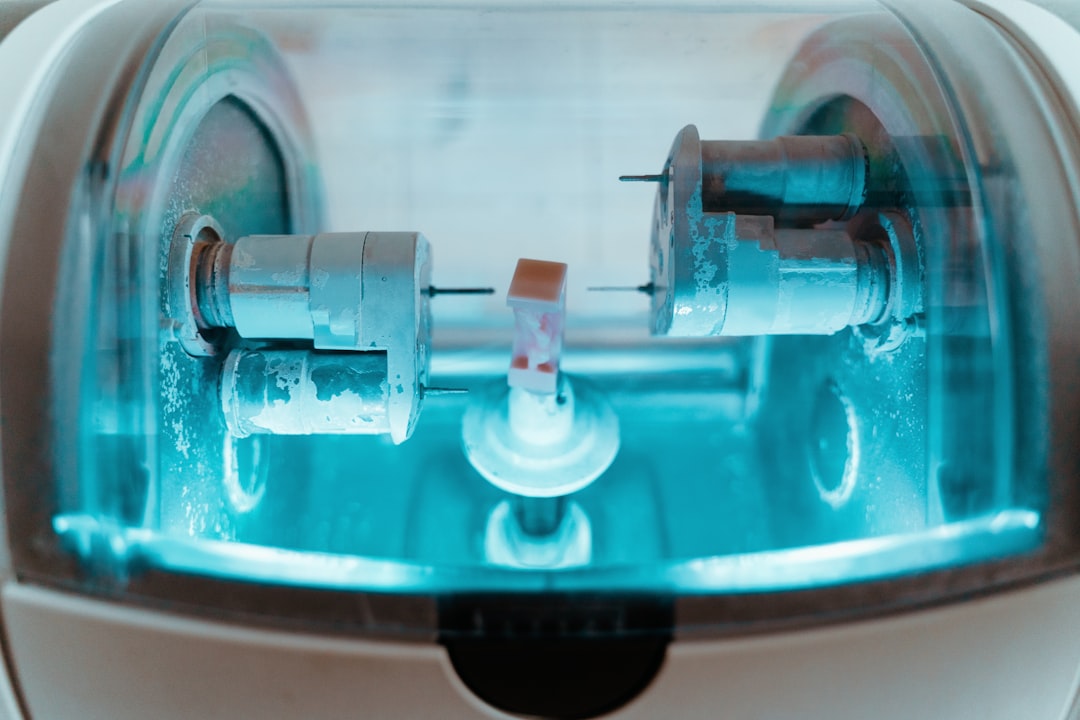Laser hair removal is a popular cosmetic procedure that utilizes concentrated beams of light to target and eliminate unwanted hair. The technology behind this method is based on the principle of selective photothermolysis, where the laser emits a specific wavelength of light that is absorbed by the pigment in the hair follicles. When the light is absorbed, it generates heat, which damages the follicle and inhibits future hair growth.
This process is effective for various skin types and hair colors, although it tends to work best on individuals with light skin and dark hair due to the contrast in pigmentation. As you consider laser hair removal, it’s essential to understand that the treatment is not a one-time solution. Hair grows in cycles, and multiple sessions are typically required to achieve optimal results.
During your initial consultation, a trained professional will assess your hair type, skin tone, and overall health to create a personalized treatment plan. The procedure is generally quick, with each session lasting anywhere from a few minutes to an hour, depending on the area being treated. With advancements in technology, many modern lasers also incorporate cooling mechanisms to enhance comfort during the procedure.
Key Takeaways
- Laser hair removal uses concentrated light to target and destroy hair follicles, preventing future hair growth.
- The benefits of laser hair removal include long-lasting results, reduced ingrown hairs, and smoother skin.
- During laser hair removal treatment, you can expect a mild discomfort and some redness, but it is generally well-tolerated.
- Before your laser hair removal appointment, it’s important to avoid sun exposure and shaving the treatment area.
- After laser hair removal, you should protect your skin from the sun and avoid hot showers to prevent irritation.
The Benefits of Laser Hair Removal: Why Choose This Method?
One of the most significant advantages of laser hair removal is its long-term effectiveness. Unlike traditional methods such as shaving or waxing, which only provide temporary results, laser hair removal can lead to a substantial reduction in hair growth over time. Many individuals experience permanent hair loss after completing a series of treatments, making it a cost-effective solution in the long run.
You may find that you spend less time and money on grooming routines, allowing you to enjoy smoother skin without the hassle of frequent maintenance. In addition to its effectiveness, laser hair removal offers a level of precision that other methods cannot match. The laser can selectively target dark, coarse hairs while leaving the surrounding skin unharmed.
This precision minimizes the risk of ingrown hairs and skin irritation, common issues associated with shaving and waxing. Furthermore, many people appreciate the convenience of laser hair removal; once you complete your sessions, you can enjoy hair-free skin without the need for regular upkeep. This method can be particularly appealing for those with busy lifestyles who want to simplify their grooming routines.
The Process of Laser Hair Removal: What to Expect During Treatment

When you arrive for your laser hair removal appointment, the first step typically involves a consultation with a trained technician or dermatologist. They will discuss your medical history, assess your skin and hair type, and explain the procedure in detail. You may also be asked to avoid sun exposure and certain medications before your treatment to ensure optimal results.
Once you’re ready to proceed, the technician will provide protective eyewear to shield your eyes from the laser light. During the treatment itself, you can expect a sensation similar to a rubber band snapping against your skin as the laser pulses are delivered. The duration of each session will depend on the size of the area being treated; smaller areas like the upper lip may take just a few minutes, while larger areas like the legs may require more time.
Many modern lasers are equipped with cooling systems that help minimize discomfort during the procedure. After each session, you may notice some redness or swelling in the treated area, but these effects typically subside within a few hours.
Preparing for Laser Hair Removal: Tips for Before Your Appointment
| Preparation Tips for Laser Hair Removal |
|---|
| Shave the treatment area 24 hours before |
| Avoid sun exposure and tanning beds |
| Avoid using self-tanning products |
| Avoid plucking, waxing, or electrolysis |
| Avoid using skincare products with retinoids |
| Cleanse the treatment area before the appointment |
Preparation is key to ensuring a successful laser hair removal experience. Before your appointment, it’s advisable to avoid sun exposure for at least two weeks. Tanning can increase the risk of complications and may affect the efficacy of the treatment.
If you have recently tanned or have sunburned skin, it’s best to reschedule your appointment until your skin has returned to its normal state. Additionally, refrain from waxing or plucking hairs in the area you wish to treat for at least four weeks prior to your session; these methods can remove the hair follicle that the laser targets. Another important step in preparing for laser hair removal is to shave the area being treated 24 hours before your appointment.
Shaving helps ensure that the laser can effectively target the hair follicles without interference from longer hairs on the surface of your skin. You should also avoid using any topical products such as lotions or creams on the day of your treatment, as these can interfere with the laser’s effectiveness. By following these guidelines, you can help maximize your results and minimize any potential risks associated with the procedure.
Aftercare for Laser Hair Removal: How to Care for Your Skin Post-Treatment
After undergoing laser hair removal, proper aftercare is essential for ensuring optimal healing and results. Immediately following your treatment, you may experience some redness or swelling in the treated area; this is normal and should subside within a few hours. To soothe your skin, consider applying a cool compress or aloe vera gel to alleviate any discomfort.
It’s also important to keep the treated area clean and avoid any harsh scrubs or exfoliants for at least a week after your session. In the days following your treatment, be mindful of sun exposure. Your skin will be more sensitive after laser hair removal, so wearing sunscreen with a high SPF is crucial to protect against UV rays.
Avoid tanning beds and direct sunlight for at least two weeks post-treatment to prevent pigmentation changes or irritation. Additionally, refrain from engaging in activities that may cause excessive sweating or friction in the treated area for a few days; this includes intense workouts or hot baths. By following these aftercare tips, you can help ensure that your skin heals properly and that you achieve the best possible results from your treatment.
Potential Risks and Side Effects of Laser Hair Removal: What to Watch Out For

While laser hair removal is generally considered safe, it’s important to be aware of potential risks and side effects associated with the procedure. Some individuals may experience temporary side effects such as redness, swelling, or mild discomfort in the treated area. These effects usually resolve within a few hours but can last longer in some cases.
In rare instances, more severe side effects may occur, including blistering, scarring, or changes in skin pigmentation. It’s crucial to choose a qualified practitioner who uses FDA-approved equipment to minimize these risks. Another consideration is that not everyone is an ideal candidate for laser hair removal.
Individuals with certain medical conditions or those taking specific medications may be at higher risk for complications. For example, if you have a history of keloid scarring or are currently using photosensitizing medications, it’s essential to discuss these factors with your practitioner during your consultation. By being informed about potential risks and ensuring that you are a suitable candidate for treatment, you can make an educated decision about whether laser hair removal is right for you.
Who Is a Good Candidate for Laser Hair Removal: Is It Right for You?
Determining whether laser hair removal is suitable for you involves considering several factors related to your skin type, hair color, and overall health. Generally speaking, individuals with light skin and dark hair tend to achieve the best results due to the contrast between their skin tone and hair color. However, advancements in laser technology have made it possible for people with various skin tones and hair colors to benefit from this treatment as well.
Before committing to laser hair removal, it’s essential to consult with a qualified professional who can evaluate your specific situation. They will assess your medical history and discuss any concerns you may have regarding the procedure. If you have certain medical conditions or are pregnant, it may be advisable to explore alternative hair removal methods until you are cleared for treatment.
Ultimately, understanding your unique circumstances will help you make an informed decision about whether laser hair removal is right for you.
The Cost of Laser Hair Removal: What to Consider Before Making a Decision
The cost of laser hair removal can vary significantly based on several factors, including the size of the area being treated, the number of sessions required, and the geographic location of the clinic. On average, you might expect to pay anywhere from $200 to $500 per session; however, many clinics offer package deals that can reduce the overall cost if you commit to multiple treatments upfront. It’s important to consider not only the financial aspect but also the long-term savings associated with reduced grooming expenses over time.
When evaluating whether laser hair removal fits into your budget, take into account any additional costs that may arise during treatment. For instance, some clinics may charge consultation fees or require follow-up appointments for maintenance treatments after completing your initial sessions. Additionally, consider how much time and effort you currently invest in traditional hair removal methods; this can help put into perspective whether investing in laser hair removal aligns with your lifestyle and financial goals.
By weighing these factors carefully, you can make an informed decision about whether this treatment is worth pursuing for you.
If you are interested in learning more about laser hair removal, you may want to check out the blog section of the In Laser Hair Removal website at https://www.inlaserhairremoval.com/blog/. One article that may be of interest is “The Fashion Home 5,” which discusses the latest trends and tips for maintaining smooth, hair-free skin. Additionally, you can explore the “My Bookmarks” section for curated resources and information on laser hair removal techniques and technologies at https://www.inlaserhairremoval.com/my-bookmarks/.
FAQs
What is laser hair removal?
Laser hair removal is a cosmetic procedure that uses a concentrated beam of light (laser) to remove unwanted hair. The laser targets the pigment in the hair follicle, damaging the follicle and inhibiting future hair growth.
How does laser hair removal work?
During laser hair removal, the laser emits a light that is absorbed by the pigment in the hair follicles. This damages the follicle and inhibits future hair growth. Multiple sessions are usually required to achieve long-term hair reduction.
Is laser hair removal permanent?
Laser hair removal can lead to long-term hair reduction, but it is not always permanent. Some hair may eventually grow back, but it is typically finer and lighter in color.
What areas of the body can be treated with laser hair removal?
Laser hair removal can be used to treat unwanted hair on various areas of the body, including the face, legs, arms, underarms, bikini line, and back.
Is laser hair removal safe?
When performed by a qualified and experienced professional, laser hair removal is generally considered safe. However, there are potential risks and side effects, such as skin irritation, redness, and changes in skin pigmentation.
Who is a good candidate for laser hair removal?
Laser hair removal is most effective for individuals with light skin and dark hair, as the laser targets the pigment in the hair follicle. It may be less effective for individuals with light hair or dark skin.
How many sessions are typically needed for laser hair removal?
The number of sessions needed for laser hair removal varies depending on the individual and the area being treated. Most people require multiple sessions, spaced several weeks apart, to achieve long-term hair reduction.





